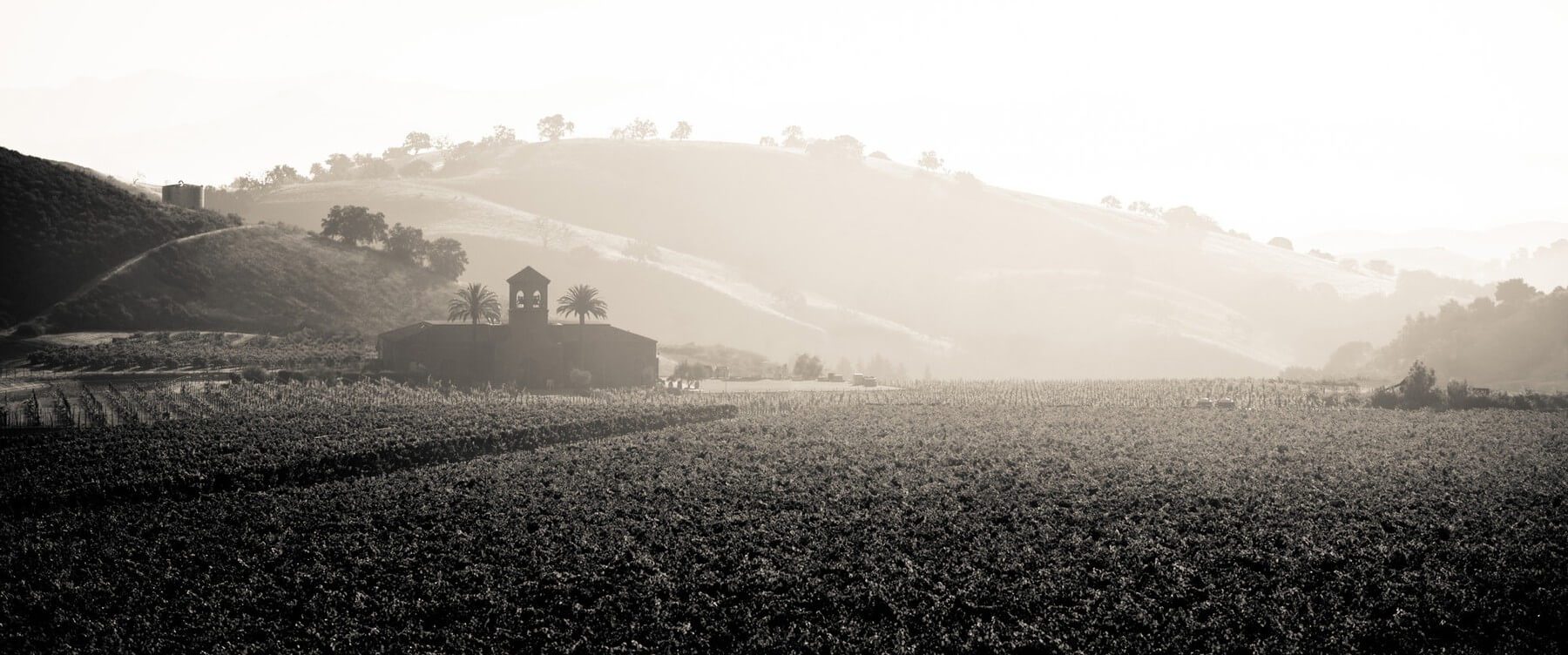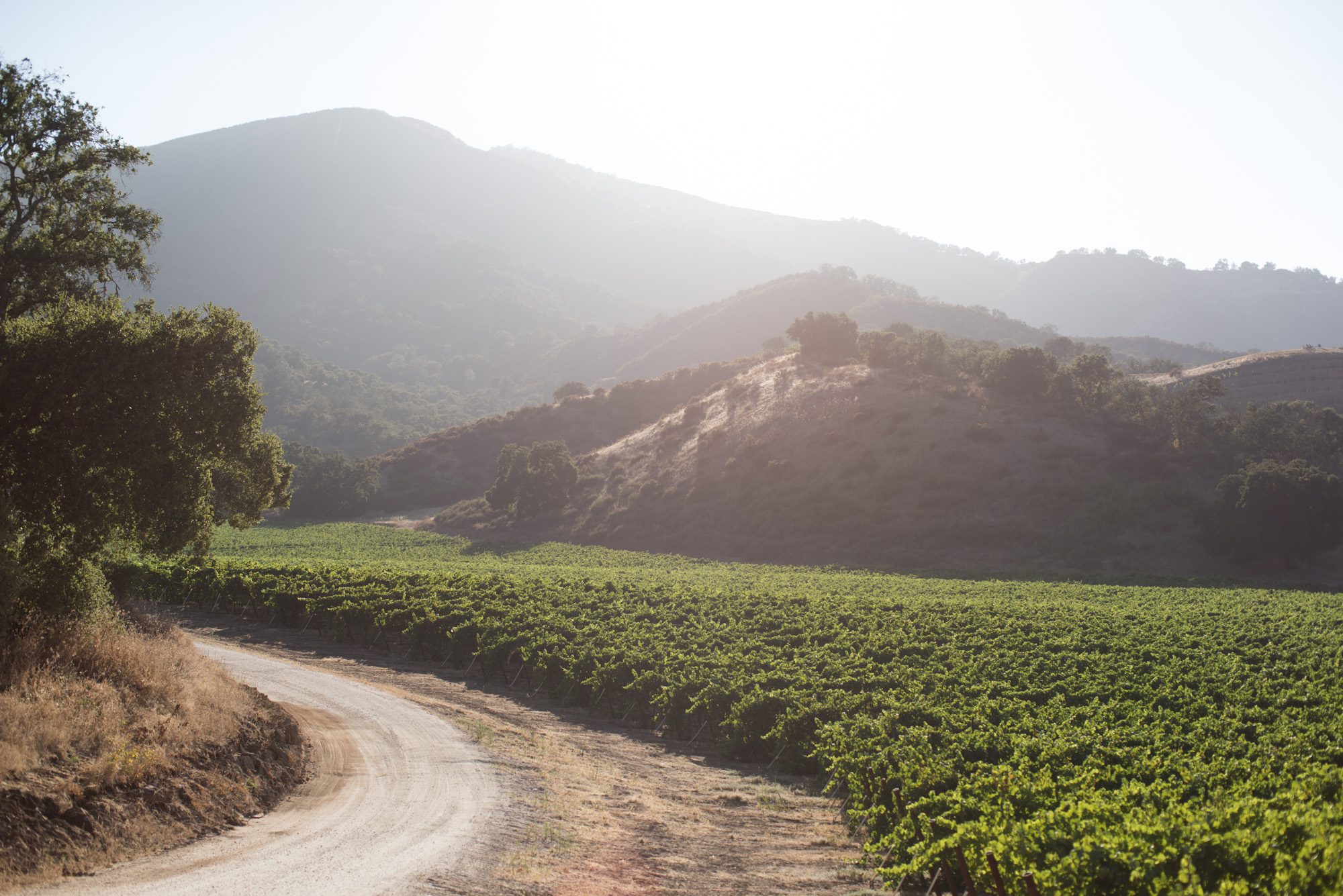I remember that the Gabilan Mountains to the east of the valley were light gay mountains full of sun and loveliness, and a kind of invitation, so that you wanted to climb into their warm foothills almost as you want to climb into the lap of a beloved mother.
- John Steinbeck

History
The land known today as Eden Rift has been under vine since 1849. For well over a century, these limestone- and dolomite-rich soils have passed through the hands of fearless pioneers, each with their own bold viticultural obsessions.
In 1830, a French wine merchant, Theophile Vache, came to the United States from Bordeaux by way of Cape Horn. In 1849, while California was still under the Mexican flag, he ventured from Monterey to the Cienega Valley and planted a small vineyard on this site. In 1883, Vache’s neighbor, William Palmtag, then the mayor of Hollister, bought the estate from Vache and, under the name, Palmtag Mountain Vineyards, elevated the wines being made there; so much so that his wines swept fine wine categories in both national and international wine competitions of the day.
By 1906, under the dual ownership of Captain Jules Jacques St. Hubert, a winemaker, and a Chicago grain broker named John Dickinson, the estate was transformed further when Dickinson made a commitment to his homestead by adding a residence to the property. He hired Walter Burley Griffin, perhaps best known as the partner of Frank Lloyd Wright, to custom-design the Dickinson House, which today serves as the residence of Eden Rift proprietor, Christian Pillsbury.
Long fascinated by early California history, and, in particular, by the Prohibition-Era, Christian was in part drawn to this land by its rich, nuanced history. Among his private collection of early Cienega Valley artifacts are old labels and articles about the Valliant label, which for years thrived at this site under the stewardship of Hiram Walker, the international spirits house. The estate was later owned by the Gimellli family, Italian immigrants who brought to the estate a fanciful, “new country” aesthetic.
Prior to acquiring this estate, Christian and his team performed extensive research on the estate; the soil aspects, diurnal swings, wind patterns, micro- and macro-climates of each block... and concluded that the calcareous, limestone rich soils would be best suited to pinot noir and chardonnay. A serious, unflinching winegrower, he has invested great emotional and financial resources to strengthen Eden Rift’s place in the continuum of California’s winemaking lineage. “This house, this land, has passed through various courageous, hard-working hands. It’s daunting to walk lockstep through history with these earlier pioneers. I’m just keeping my head down, trying to restore this property and vineyard mindfully so that it can reveal all of its historic and natural glory.”

Vineyard
For over 150 years, the Eden Rift site has been an inspired source of enological experimentation. Located at the foothills of the Gavilan Mountain Range, Eden Rift sits atop the San Andreas Fault, and is comprised of limestone-rich, calcareous deposits running through granitic, sandy beds of loam. These dramatic, nearly inhospitable soils have challenged any number of grape varieties.
Over time, we have learned that the varieties most ideally suited to this singular confluence of soils and maritime-influenced micro- and macro-climates are Pinot Noir, Chardonnay, Zinfandel and Pinot Gris.
Pinot Noir and Chardonnay seem especially simpatico to this estate site, and it is through these two transparent varieties that we have found the most honest and pure expression of terroir at Eden Rift.
Plantings per Acreage:
Pinot Noir: 89.71 acres under vine, with approximately half (43 acres) currently producing. The plantings highlight the Mt. Eden, Swan and Calera heritage clones, as well as Pommard (4) and "Dijon" clones 115, 667, 777 and 828.
Chardonnay: 22.5 acres under vine, with 16 acres currently producing. Clonal selections are focused on Calera, Wente 4 and 72, as well as "Dijon" clone 76.
Zinfandel: 0.7 acres under vine of own-rooted, head-trained Zinfandel, planted in 1906.
Pinot Gris: 3.3 acres under vine of clone 9 on terraced hillside.
Cienega Valley
The Cienega Valley was anointed an American Viticultural Area, or AVA, in 1982. In order to receive this distinction, a winegrowing region must demonstrate that it is nationally recognized. Additionally, petitioners must also prove that the historical boundaries of the area are legitimate. Lastly, and perhaps most importantly, it must be proven that the conditions of elevation, climate and soil, as well as other landscape features, be distinctive and suitable to the growing and production of singular wines.
The Cienega Valley continues to merit this distinction.
Known for its breathtaking and historic contributions to literature---the embodiment of John Steinbeck’s literary muse was the Cienega Valley, the Gavilan Mountains and Monterey County---, this region looms 1,000 feet above sea level. The Cienega Valley is perhaps best recognized for its viticulturally meritorious location; it is situated atop the San Andreas Fault, and is comprised primarily of porous limestone deposits, punctuating a terrain laden with granitic, sandy beds of loam. The calcium evident in the Cienega Valley’s calcareous soils results in wines demonstrating greater acidity, inherent structure, and, when properly grown and made, longevity.
Visitors to the Cienega Valley will also enjoy an abundance of untamed vistas, a temperate climate and an historic mission, within the township of San Juan Bautista, which provides for the curious traveler a living continuum of California’s vivid, yet sometimes, complicated history.

